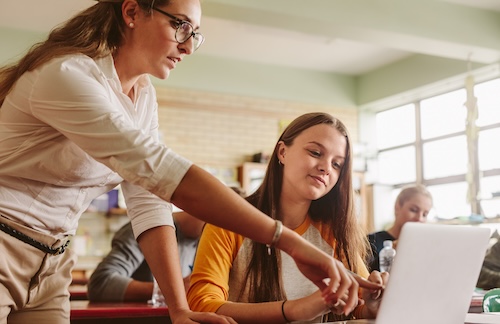- Playground Post
- Posts
- 🛝 Undocumented Students, Vacant Buildings, Teacher Collaboration
🛝 Undocumented Students, Vacant Buildings, Teacher Collaboration
Welcome to Playground Post, a bi-weekly newsletter that keeps education innovators ahead of what’s next.
Here’s what we have on deck for today…
Five states reconsider undocumented education access

A new wave of policy changes is emerging as five states propose limiting undocumented students' access to public education, challenging the 40-year-old Plyler v. Doe Supreme Court ruling.
The Heritage Foundation is recommending states collect immigration status data during enrollment and charge tuition for undocumented students – practices currently prohibited.
These shifts create uncertainty for schools that have never tracked immigration status, potentially affecting millions of students and enrollment systems nationwide.
This represents an opportunity for education innovators to develop new enrollment management systems, legal compliance tools, and alternative education pathways for schools navigating these complex policy changes.
Empty schools transform into childcare solutions

As enrollment declines, districts nationwide are converting vacant school buildings into early learning centers.
Oklahoma City and Tucson now use former elementary schools to serve infants, toddlers, and preschoolers, addressing critical childcare shortages while keeping community buildings active.
Conversions require adding in-classroom bathrooms, replacing playground equipment, and installing child-sized furniture. Costs range from $150,000 for basic renovations to over $2 million for comprehensive overhauls.
"These classrooms are massive," notes Paula Gates from Sunbeam, which operates two converted schools. "We're getting this square footage to create really beautiful classroom environments."
For innovators, this trend creates opportunities to develop turnkey services that help districts transform unused facilities into much-needed early education spaces.
Teacher collaboration needs structure not just time

Schools set aside time for teacher meetings, but research shows that's not enough for effective collaboration.
"Having dedicated time for PLCs is common in schools today, but managing logistics isn't the same as fostering genuine collaboration," researchers note. "Hope is not a plan."
Successful teacher teams need specific structures: clear protocols for different types of discussions, designated meeting roles, and systems to document outcomes.
The payoff? "Collective effervescence" - a joyful buzz that energizes teachers beyond meeting times.
To close this gap, innovators can develop digital tools and protocols that transform traditional PLCs from time-fillers to engines of teacher growth and student success.
If you enjoyed this edition of Playground Post, please share it with your friends!
We’ll be back with another edition on Friday. See you then!
To stay up-to-date on all things education innovation, visit us at playgroundpost.com.
What did you think of today’s edition? |